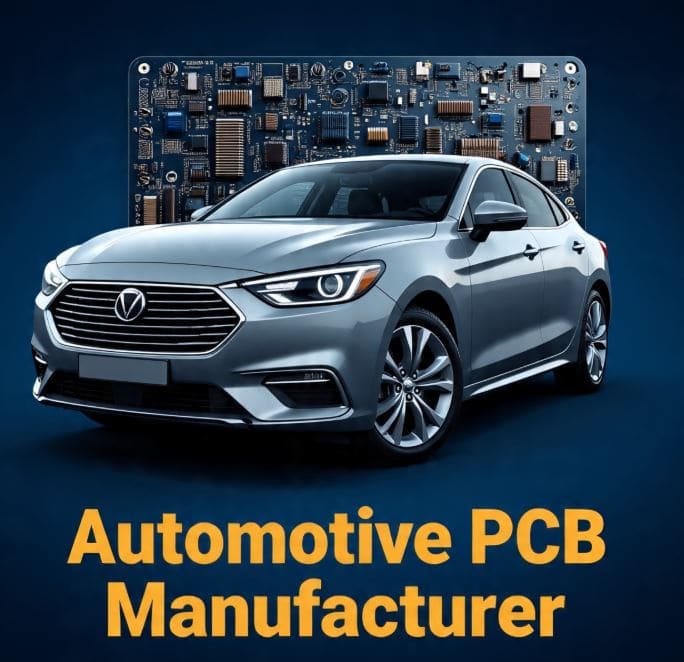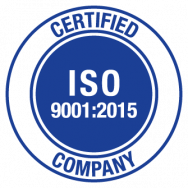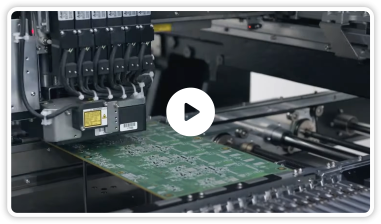The automotive industry has come a long way. From utilizing fully mechanized internal combustion engines, modern vehicles are trending towards battery operation. Rather than use only mechanical levers and gears, electric vehicles, or EVs, as they are popularly known, use more electronics to control them — several microcontrollers to control multiple functions, electronic drivers to power functions like lighting, steering, information display, communication, and control. Ultimately, the EV has various printed circuit boards that carry innumerable electronic components.However, operating conditions inside the EV, under the hood, are extreme. Thus, PCBs must be operable in the harsh environment of operating EVs subjected to extreme temperatures, vibrations, etc. At Rush PCB Inc., we make automotive PCBs that apply to all types of automotive electronics, including infotainment systems, engine control units, and body control modules, to name a few.

Applications of PCBs for the Automotive Industry
Our automotive PCBs can handle various applications typical in the automotive industry. These include:
Power-Train Control
- Transmission Controls
- Traction Converters and Inverters
- Battery Management Systems
- ECU or Engine Control Units
ADAS or Advanced Driver Assistance Systems
- Radar Systems
- LIDAR Systems
- Camera Modules
- Vision Processor Modules
BCM or Body Control Modules
- Lighting Systems
- HVAC Controls
- Door Control Modules
- Central Gateway Controls
Infotainment Systems
- Audio Amplifiers
- Navigation Systems
- Digital Display / Graphics Modules
- Telematics Gateways
Security Modules
- ABS or Anti-lock Brake Systems
- Immobilizer Systems
- Central Locking Systems
- Blind Spot Detection Systems
Instrumentation Systems
- Driver Information Display System
- Tail-Lights and Warning Lights
- Odometer System
PCBs For the Automotive Industry
technologies to suit specific applications inside the EV and meet the demanding requirements. We offer:
Metal-Backed PCBs
- Industrial Metal Substrate PCBs
- Metal Core PCBs
- Metal Baseplates that improve EMI shielding and thermal management
- Synthetic heat sinks for power amplifiers
Rigid PCBs
- Conventional glass-epoxy FR4 PCBs
- Thermally reliable higher Tg PCBs
- PCBs made from Flame Retardant and Halogen-Free materials
- Some PCBs have a metal core for optimum thermal characteristics
Flex PCBs
- Single-, Double-, and Multi-Layered Flex PCBs
- Special designs to suit the spatial movement and space constraints
- Polyimide material resulting in higher flexibility and reliability
Rigid-Flex PCBs
- Rigid PCBs
- Three-Dimensional routing capability
- Interconnection between various PCBs
High-Frequency PCBs
- Precise impedance control
- PTFE and other low-loss material substrates
HDI or High-Density Interconnect PCBs
- Higher density improves the capability of integrating more functionality
- More routing layers along with thinner dielectrics and micro-vias
LTCC or Low-Temperature Co-fired Ceramics
- Ceramic PCB with multiple layers for power modules, high frequency, and fast signals
Dielectric Substrates with High Thermal Conductivity
- Improved thermal capability with dielectrics using ceramic fillers
Embedded Passives
- Integrated passive components like capacitors and resistors within PCB layers
- For improvement in electronic performance while saving space
Additive Processes
- New process for creating high aspect ratio and fine features
- Using aerosol jet printing and other technologies
Challenges in PCB Manufacturing for Automotive Applications
PCBs for automotive applications must meet unique performance challenges, such as:
Wide Temperature Range
- Low temperatures up to -40 °C
- High temperature up to +125 °C
High Shock/Vibration Loads
- Vibration from engine operations and rough road surfaces
- Shocks due to uneven road surfaces and bumps
Electromagnetic Interference
- RF interference from transmitters
- Switching noise from actuators, motors, and converters
High Voltage Levels
- Electric Vehicles can have voltages up to 650 VDC
- Fast transients due to load bumps
Critical Safety and Reliability
- Complying with the ISO 26262 standard for functional safety
- Must meet rigorous product validation
Mixed Signals
- Handling noisy digital circuits and sensitive analog signals
Specific Requirements and Standards for Automotive PCBs
With the increasing integration of electronics in electric vehicles, there is a greater need for reliability and precision in their PCBs. We make these PCBs to specific requirements and functionality while designing them using stringent standards. At Rush PCB Inc., we follow these standards as a fundamental requirement for ensuring the vehicle performs optimally and is durable and safe. These standards are crucial in defining the fundamental design and functionality of PCBs that we offer to the automotive industry. They showcase the significant advancements we have made not only while driving technology but also while upholding quality benchmarks across the industry. Some key standards are:
IPC-6012DA
surface finishes, and further critical aspects of manufacturing PCBs. All our automotive PCBs conform to the IPC-6012DA standard. That means they meet the level of consistency, durability, and reliability that the industry demands.
Why Rush PCB Inc. for PCBs for the Automotive Industry?
Durability and Reliability
The primary reason our customers choose Rush PCB Inc. for their automotive PCBs is we ensure the durability and reliability of our products in extreme automotive conditions. When a vehicle is operating, its PCBs are exposed to extremely demanding conditions. Such adverse conditions stress the PCB to the maximum. Therefore, the PCB must be durable and reliable enough to withstand this. We use a holistic approach to meet these challenges and we encompass both the design and manufacturing phases.
While designing, we consider reinforced structures for absorbing shocks and vibrations. We also look at innovative thermal solutions for managing temperature variations. Furthermore, we choose suitable materials such as those with high glass transition temperatures, thereby allowing the PCB to maintain its structural integrity under severe conditions. Our testing methods include thermal cycling and vibration testing. This is necessary for validating the reliability and durability of our PCBs when they operate under the hood of a vehicle.
We understand it is critical to address environmental challenges in automotive applications. Therefore, we design our PCBs to withstand temperature fluctuations, shocks, and vibrations. That is why our PCBs provide optimal performance and longevity. For this, we need to manage an interplay of the right material, thermal management strategies, and thorough testing, ensuring our PCBs do not simply survive, but thrive in the adverse conditions within the vehicle.
Material Selection and Compliance
We critically consider the material that we select for an automotive PCB. The selection is an important point for the design, as it helps us to improve the PCBs’ performance and reliability significantly. In the material selection process, we consider several critical aspects:
Temperature Resilience
As the automotive environment subjects the PCB to a wide range of temperatures, the materials we select must demonstrate adequate resilience to temperature variations, thereby ensuring consistence performance under extreme temperatures.
Moisture Resistance
In an automotive environment, the PCB is also subject to moisture and humidity. Therefore, we choose materials with low moisture absorption rates. This arrests PCB deterioration. Over time, it also helps to maintain its integrity.
Mechanical Strength
Because the automotive environment involves shocks and vibrations, we choose materials with adequate mechanical strength to withstand them while maintaining their integral structure.
Thermal Conductivity
It is critical to maintain high thermal management efficiency within an automotive environment. For this, we choose materials with high thermal conductivity which can dissipate heat effectively. Preventing overheating increases the life of electronic components.
Dielectric Properties
For consistent signal transmission without distortion, we choose materials with stable dielectric properties. This improves the reliability of communication within the vehicle.
RoHS Compliance
RoHS compliance ensures we minimize the impact on the environment, enhance the safety of the vehicle, and maintain global environmental standards.
Sustainability Practices
materials that support environmentally friendly manufacturing. For this, we choose materials that minimally impact the environment. We also consider the recyclability of the chosen material. This is how we align with the broader goals of eco-friendly electronics.
Safety Regulations
Other than the RoHS directives, we also choose materials conforming to the various safety regulations that apply to automotive PCBs. This way we are sure the materials we are using in our manufacturing processes meet specific safety standards. Thereby, we ensure the overall safety of the vehicle and reduce the risks associated with toxic substances at the same time.
Finally
If you are looking for quality automotive PCBs, Rush PCB Inc. has just what you need. We have an experienced team that can craft these essential components for you and help you launch your car on time, every time. Contact us today with your requirements and get a quote within no time.
Why is the electronic content increasing in automobiles?
What is the typical temperature that PCBs in a vehicle must withstand?
What reliability tests do you conduct for automotive PCBs?
Do you follow international standards for automotive PCBs?
Do your automotive PCBs comply with RoHS directives?









